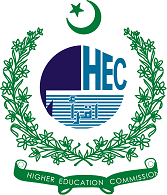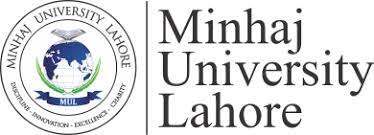Industrial Development under China Pakistan Economic Corridor (CPEC): Accomplished Lessons from China
DOI:
https://doi.org/10.58932/MULA0020Keywords:
Rapid Industrialization, CPEC, Economic Zone, Super Clusters, Special Economic Zones.Abstract
Economic clusters have been accepted as the most efficient rudiments for urban and regional economic strategies. China being one of those countries who has set an example for the growing economies for successful growth and took considerable amount of people out of poverty (estimated 800 million). Through the rapid industrialization, the economic giant-China has set an example for the rising economies how to transform, design and develop the economic zones. Rapid Industrialization in China was the result of the exclusive expansion of several ‘specialty cities’ with the small, medium and large productions units for the specific product in particular areas for contributing in millions annually. Now CPEC has entered into its robust second phase which comprises of industrialization and development of special economic zones empowered with railway networks, trade promotion and economic development. This study has used Cluster theory in order to investigate the systematic approach of China towards setting up clusters and subsequent development. The ongoing research is qualitative, descriptive and analytical in nature which suggests China is phenomenal in managing its city cluster policy which can provide a base to Pakistan to initiate its enriching plans.
References
China Briefing, (2014). Qingdao’s Blue Economy: Marine investment on the rise. http://www.china-briefing.com/news/2014/06/12/qingdaos-blue-economy-marine-investment-rise.html.
Donald, H. S. (2008). China Rising. World Policy Journal, 25(3), 157-170.
Farole, T. (2010). Special Economic Zones: Performance, Policy and Practice—with a Focus on Sub-Saharan Africa. World Bank, Washington, DC.
Frontier Strategy Report (2019). Frontier Communications Reports Second Quarter 2019.
Gebrewolde, T. M. (2019). Special Economic Zones: Evidence and prerequisites for Success. International Growth Centre.
Guo, R. X. (2011). An Introduction to the Chinese economy: the driving forces behind modern day China. John Wiley & Sons.
Hayami, Y. (1998). Toward the rural-based development of commerce and industry: Selected experiences from East Asia. Washington D.C: World Bank.
Huaxia, M. (2021). Facts & Figures: China's foreign trade in 2020. Retrieved from
http://www.xinhuanet.com/english/2021-01/14/c_139667906.htm
Hutton, W. (2007). China and the West in the 21st Century. London: Abacus.
Kroeber, A. R. (2016). China's economy: What everyone needs to know? New York: Oxford University Press.
Lin, J. Y. (2003). The China miracle: Development strategy and economic reform. Hong Kong: The Chinese University Press.
Marshall, A. (1890). Principles of Economics. Ontario: McMaster University.
Marshall, A. (1920). Principles of Economics: An Introduction. London: Macmillan.
Mehmood, K. (2019). China Has invested $19b In CPEC projects: Yao Jing. https://tribune.com.pk/story/1954843/2-china-invested-19b-cpec-projects-yao-jing.
Mukhtar, U., Din, S. A., Islam, Z. & Ramzan, S. (2013). Identification of Impediments in Export Promotion Zones of Pakistan. JISR Management and Social Sciences & Economics, 11(2), 101-116.
Naughton, B. (2007). The Chinese economy: transitions and growth. Cambridge: MIT Press.
Rising Giants, (2009). Industrial clusters are changing the face of Chinese manufacturing.
Retrieved from https://knowledge.wharton.upenn.edu/article/rising-giants-industrial-clusters-are-changing-the-face-of-chinese-manufacturing/
Rodrik, D. (2016). Premature deindustrialization. Journal of Economic Growth, 21(1), 1-33.
Roos, J. A., Sasatani, D., Brackley, A. M., & Barber, V. (2010). Recent trends in the Asian forest products trade and their impact on Alaska. Research Note PNW-RN-564. United States Department of Agriculture, Forest Service, Pacific Northwest Research Station 42 p.
Sheng, A. & Geng, X. (2018). China is building 19 'supercity clusters'. Retrieved from World Economic Forum. https://www.weforum.org/agenda/2018/09/how-cities-are-saving-china
Imam, M.A. et al. (2023) ‘Contextualizing research approaches: The role of Western and Islamic philosophies in shaping methodology and knowledge creation’, Al-Irfan, 8(16), pp. 69–90. doi:10.58932/mulb0029.
Industrial Economic Zone, (2020). Special Economic Zones to Revolutionize Industrial & Economic Growth of Pakistan.
Siddiqui, S. (2020). CPEC moves to second phase. The Tribune. (October 2)
Storper, M. (1998). The Transition to Flexible Specialization in the US Film Industry: External Economies, the Division of Labour, and the Crossing of Industrial Divides. Cambridge Journal of Economics, 13(2), 273–305.
Wong, D. (2021). China’s 2021 Policy Priorities: Achieving Continuous, Stable, and Sustainable Growth.
Zahid, W. (2020). CPEC fact sheet: 2013-2020.
Zeng, D. Z. (2019). Special Economic Zones: Lessons from Global Experience. PEDL Synthesis Paper Series.




